Exceptional visual performance can be a reality for patients with even significant astigmatism. At Art Optical we provide a full range of lens options for your astigmatic patients.
Typically when the prescription exceeds 2.00D of with-the-rule corneal cylinder, the percentage of success with a spherical design decreases. As corneal cylinder increases, a spherical base curve will typically become more uncomfortable and the physical fit will appear less acceptable.
Intended for:
- Back Torics
- Bi-torics
- Front Torics
Aspherics
From 2.00D to 3.50D of corneal cylinder, with an equal amount of spectacle cylinder, the Boston® Envision design is a good lens of first choice. The bi-aspheric, junctionless posterior surface of Envision provides good patient comfort and better physical alignment than a spherical base curve.
Back Torics
Back toric lens designs are typically used when the corneal cylinder exceeds 3.00D and the amount of corneal versus spectacle cylinder are relatively equal.
Bi-torics
Bi-toric designs are used when the corneal cylinder exceeds three diopters and there is a substantial difference between the amount of corneal and spectacle cylinder. Having a substantial difference in toricity between the corneal and spectacle cylinder will normally not work with back toric lens designs. A bi-toric lens design will achieve the best lens to cornea fitting relationship and compensate for the calculated residual cylinder on the front surface.
Front Torics
It may be necessary to fit a front toric design for patients who have a spectacle cylinder with little or no corneal cylinder. This will generally result in residual cylinder, causing visual difficulties with a basic spherical lens design. This lens has a toric anterior surface with a spherical posterior surface and a prism ballast to orient the lens in the desired position.
See the Toric Lens Calculator for fitting help.
Need more help? Contact our consultants who are available to answer your questions. We can help with any custom contact lens fitting scenario.
Supplemental Products

Tangible Clean Multi-Purpose Solution
Includes:
- Tangible Clean Multi-Purpose Solution (12 oz)
- Deep well lens case
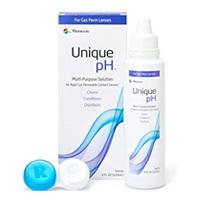
Unique pH Multi-Purpose Solution
Includes:
- Unique pH Multi-Purpose Solution (4 oz)
- Deep well lens case
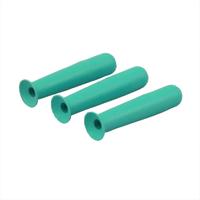
DMV "Classic" GP Lens Removers w/ Hollow Handle
Small suction cup with hollow handle used for removing gas permeable and PMMA lenses from the eye. Instructions included.
Sold individually.
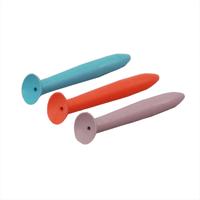
DMV 2 ‘Magic Touch’ GP Lens Removers with Hole
Small bulb style suction cup with hole used for removing gas permeable and PMMA lenses from the eye. Instructions included.
Sold individually.
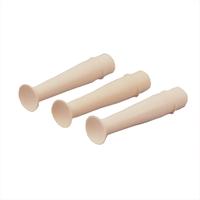
DMV Traditional GP Lens Removers
Small suction cup used for removing gas permeable and PMMA lenses from the eye. Instructions included.
Sold individually.

Flip Top Lens Case
White lens case is suitable for lens soaking or storage, but not suitable for heat disinfection.
Sold individually.
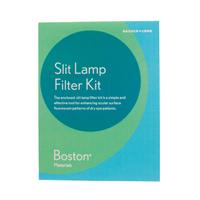
Slit Lamp Filter Kit
A simple and effective tool for enhancing the fluorescein patterns of all GP lenses.
Includes:
- #12 Kodak Wratten filter
- one strip of hook-and-loop tape
- convenient storage package
- instructions
Sold individually.
Progent by Menicon (7 treatments)
For biweekly cleaning of RGP contact lenses. Cleans lenses and loosens and removes surface protein deposits after a short soak without manual rubbing.
Includes:
- Progent treatment Lens case
Progent by Menicon (1 treatment)
For biweekly cleaning of RGP contact lenses. Cleans lenses and loosens and removes surface protein deposits after a short soak without manual rubbing.
Includes:
- Progent treatment
- Lens case
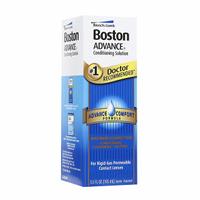
Boston Advance Comfort Formula Conditioning Solution
Used for wetting and storage of gas permeable lenses. Preserved with PAPB, CHG and EDS. It is an effective agent that totally disinfects gas permeable lenses and kills all micro organisms when lenses are soaked for at least four hours.
Sold individually. (3.5 oz)
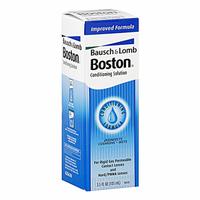
Boston Conditioning Solution – Improved Formula
Used for wetting and storage of gas permeable lenses. Preserved with chlorhexidine. This preservative is not as effective as PAPB, but is a good alternative for those patients who react to PAPB.
Sold individually. (3.5 oz)

Boston Advance Cleaner
Patient daily cleaner for gas permeable lenses.
Not to be placed directly in the eye.
Sold individually. (30 ml)
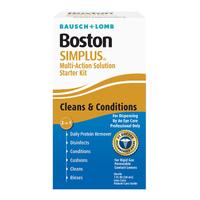
Boston Simplus Multi-Action Starter Kit
Includes:
- Boston Simplus Multi-Action Solution (1 oz)
- Deep well lens case
- Patient instruction booklet
Recommended for plasma treated lenses.
Quantities of 12.
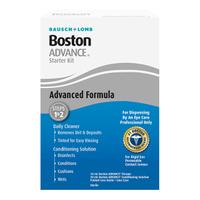
Boston Advance Comfort Formula Starter Kit
Includes:
- Boston Advance Cleaner (10 ml)
- Boston Advance Comfort Formula Conditioning Solution (1 oz)
- Deep well lens case
- Patient instruction booklet
Quantities of 12.